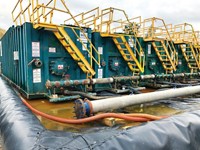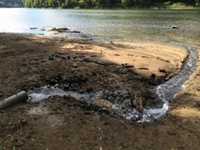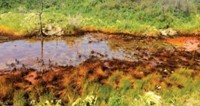Advertisement
Grab your lab coat. Let's get started
Welcome!
Welcome!
Create an account below to get 6 C&EN articles per month, receive newsletters and more - all free.
It seems this is your first time logging in online. Please enter the following information to continue.
As an ACS member you automatically get access to this site. All we need is few more details to create your reading experience.
Not you? Sign in with a different account.
Not you? Sign in with a different account.
ERROR 1
ERROR 1
ERROR 2
ERROR 2
ERROR 2
ERROR 2
ERROR 2
Password and Confirm password must match.
If you have an ACS member number, please enter it here so we can link this account to your membership. (optional)
ERROR 2
ACS values your privacy. By submitting your information, you are gaining access to C&EN and subscribing to our weekly newsletter. We use the information you provide to make your reading experience better, and we will never sell your data to third party members.
Environment
Analytical Test Could Underestimate Radioactivity In Fracking Wastewater
Water Quality: Study shows that a test commonly used to analyze drinking water is inappropriate for monitoring radium in the wastewater from hydraulic fracturing
by Deirdre Lockwood
March 6, 2014

When energy companies extract natural gas from shale using hydraulic fracturing, they generate flowback wastewater, a brine solution that contains naturally occurring radionuclides, including radium isotopes. Because some of this wastewater is diverted to treatment plants and eventually discharged into local waterways, state environmental agencies have started to establish procedures for monitoring radium levels in the wastewater. However, a new study cautions that one test state agencies are considering could underestimate radium levels by as much as 99% (Environ. Sci. Technol. Lett. 2014, DOI: 10.1021/ez5000379).
Environmental protection departments in Pennsylvania and New York have used or suggested others use a radium-measurement technique that the U.S. Environmental Protection Agency recommends for analyzing drinking water. In the test, researchers add a spike of barium to a water sample and then mix in sulfuric acid to precipitate out sulfate salts of the two metals. By measuring the radioactivity of the precipitated solids, researchers can calculate the amount of radium present.
Michael K. Schultz, a professor of radiology at the University of Iowa, and his colleagues decided to test the method’s accuracy because studies have shown that the drinking-water method is unsuitable for solutions with high concentrations of ions, which is the case for fracking wastewater.
His team used several methods to measure amounts of radium isotopes in a sample of flowback water from the Marcellus Shale, a large formation being exploited for shale gas in the northeastern U.S. Besides the coprecipitation technique, they also tested high-purity germanium gamma-ray spectroscopy, which gives a direct measurement of several radium isotopes, and a portable spectrometry technique to detect radon isotopes that are decay products of radium.
Compared with gamma-ray spectroscopy—considered the gold standard for radium analysis—the coprecipitation method recovered less than 1% of 226Ra, the most abundant radium isotope in the sample. The radon isotope method detected 91% of it.
The EPA method is ineffective for analyzing fracking wastewater because it produces unmanageable amounts of precipitate. In the flowback water, concentrations of barium and other divalent cations are “so high that when you add a little bit of sulfuric acid, you get a mountain of material,” Schultz says. The solution can bubble over, and the amount of precipitate is hard to dry for accurate radioactivity measurements. The method is useful for drinking water, because radium and other ion levels are typically low in those samples. But radium levels are high enough in fracking wastewater that they can be directly measured with gamma-ray spectroscopy, Schultz says.
Avner Vengosh, a geochemist at Duke University, says most researchers who study radium isotopes in fracking waste, including his lab and the U.S. Geological Survey, directly measure them with gamma-ray spectroscopy. “People have to know that this EPA method is not updated” for use with fracking wastewater or other highly saline solutions, he says.
Last year, Vengosh and his colleagues found that sediments downstream of a Pennsylvania plant that treated fracking wastewater had 226Ra levels about 200 times as high as those upstream. To avoid this contamination, gas companies have started to recycle the wastewater in drilling operations or inject it in deep wells instead of sending it to treatment plants, Schultz and Vengosh say.





Join the conversation
Contact the reporter
Submit a Letter to the Editor for publication
Engage with us on Twitter